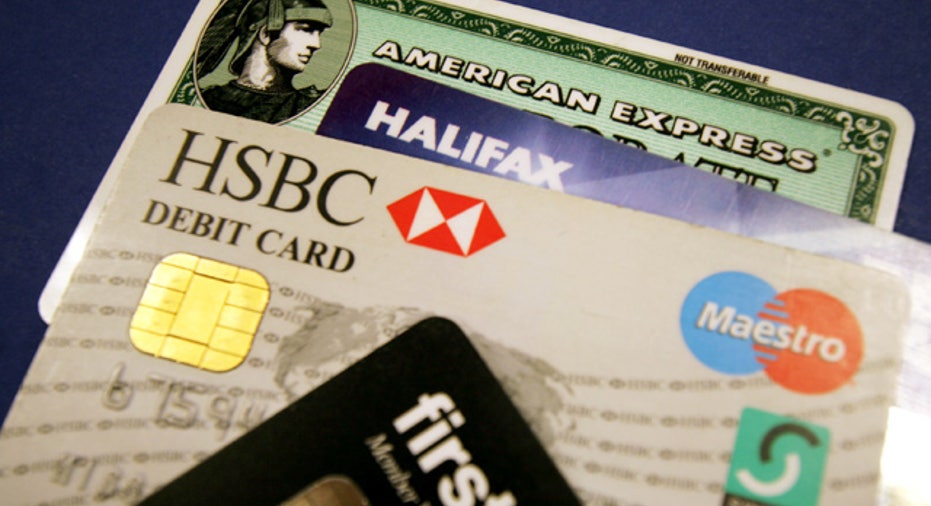FICO Expert: Why Your Credit Scores Differ

Barry Paperno serves as consumer affairs manager for myFICO.com and community manager for the myFICO Forums online community. He has assisted consumers and advised lenders on FICO credit scoring for the past 16 years.
Before joining FICO, Barry managed consumer operations for Experian Information Solutions. He holds a Bachelor of Science degree in business administration from California State University, East Bay.
Have you ever checked your credit score? You may have faced a startling revelation: There's more than just one credit score. You may have seen brand-name scores such as FICO or VantageScore, or other generic credit scores lenders don't actually use. Even buying your credit score from the three major credit reporting agencies -- Equifax, Experian and TransUnion -- may have turned up three different numbers.
The reasons for the variations are numerous. Your credit score can vary from bureau to bureau because of differences in credit report data. It also depends on the scoring model used.
Those variances hold true when it comes to the FICO score, a brand of credit score commonly used by lenders. A FICO score is a three-digit number based on your credit report that represents your risk of becoming seriously delinquent in the next 24 months.
In his second Q&A with Bankrate.com on credit scores, Barry Paperno, consumer affairs manager at myFICO.com, explains the different types of FICO credit scores out there and how they differ from the scores consumers can buy.
What other types of FICO credit scores do lenders have access to?
There are three credit bureaus. For each bureau's scores, we have variations on the score that zero in on a particular credit product; for example, for bank card or auto lending. What we do is we provide the basic broad-based FICO score that we've been talking about. And then for a credit card lender, they may order what's called the bank card industry option score, which takes the basic formula and tweaks certain information that can do a better job of predicting how a consumer will pay that type of account.
When we get into these industry option scores, it's looking at, for example, the likelihood you will pay your credit card on time or that you will pay your auto loan on time. It gives additional emphasis to, say, credit card information in that score or auto (information) in the auto score. So, those are variations on the FICO score and those are available at each bureau. But they are very similar to the broad-based score just with some slight differences.
What's the difference among the newer versions of FICO scores?
Every few years, we redevelop each of the bureau's scores using new data and any new nuances we developed in our predictive method and so forth. And by looking at new data and new techniques of predicting, we can better predict how a consumer will pay in the current economic environment.
While most of the same factors are looked at, the points can vary for a particular action. If you're late on a payment, (and) if you're using the newest version of the Equifax FICO score, for example, it may impact you differently than if you're using an older version of the score. The points are going to change. In some cases, the factors are going to change.
In this case, if we're in the same bureau, we're just talking about different models within that bureau's scores. We're not talking about differences in data. You can be looking at the same credit report we're talking about and get different scores. It's basically different formulas are creating different scores. They're all similar and they all use the same range of 300 to 850. And they're all adjusted so that a lender can use the same cutoffs in evaluating those scores.
So, if a lender requires, say, a 760 score for the best mortgage rate, for example, that 760 will represent the same level of risk to that lender, whether they are getting it from the most recent version, an older version of the score or one of the industry scores. A lender doesn't have to worry about the version they are using. They can be assured that the score will be assigning the same level of risk even though some different information went into it.
How are these credit scores different from the ones consumers have access to?
The scores that are available on myFICO and the Equifax FICO score, for the most part, those are the same scores that lenders are using in many cases. We found in 2010 (that) U.S. lenders bought roughly 4 billion FICO scores that were calculated from the same models as offered on myFICO.com. So while the scores that myFICO sells are not the ones that all lenders use, you're either going to get the ones that lenders use or they are going to be very close. They may be off from one version to another. But when you get other scores from other websites, then you're talking about non-FICO scores that for the most part are not used by lenders. They're used to provide consumers with an idea of how they stand credit-wise.



















